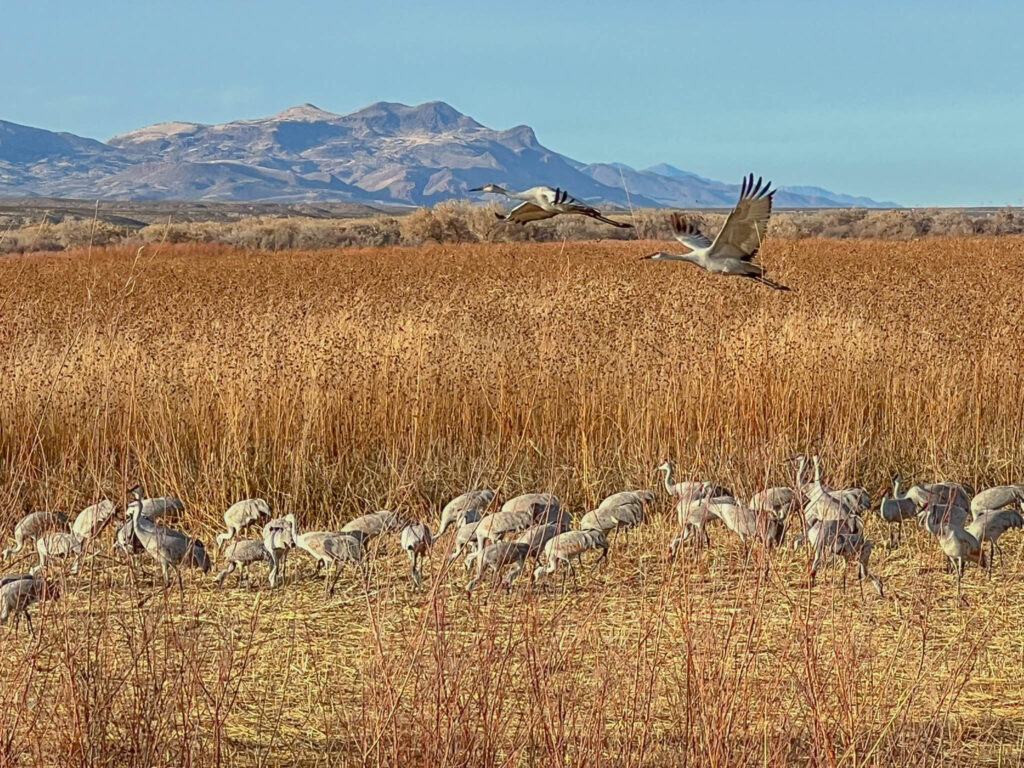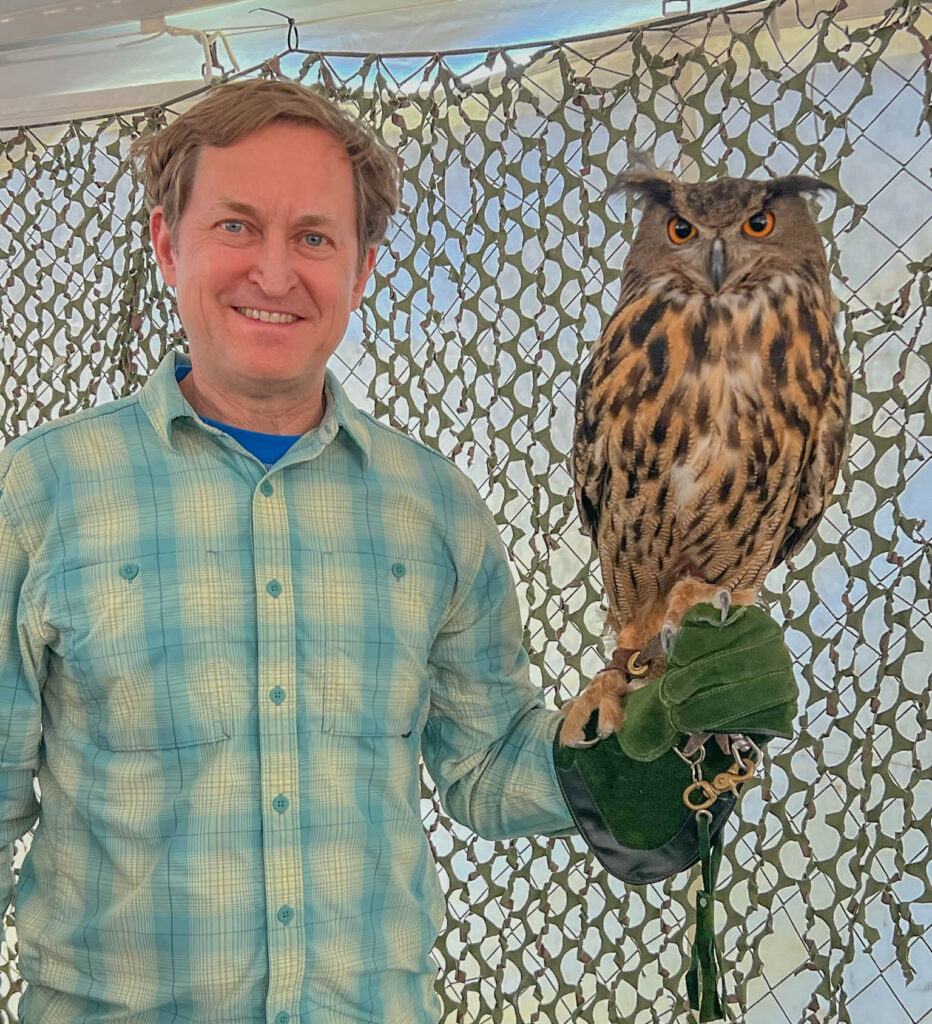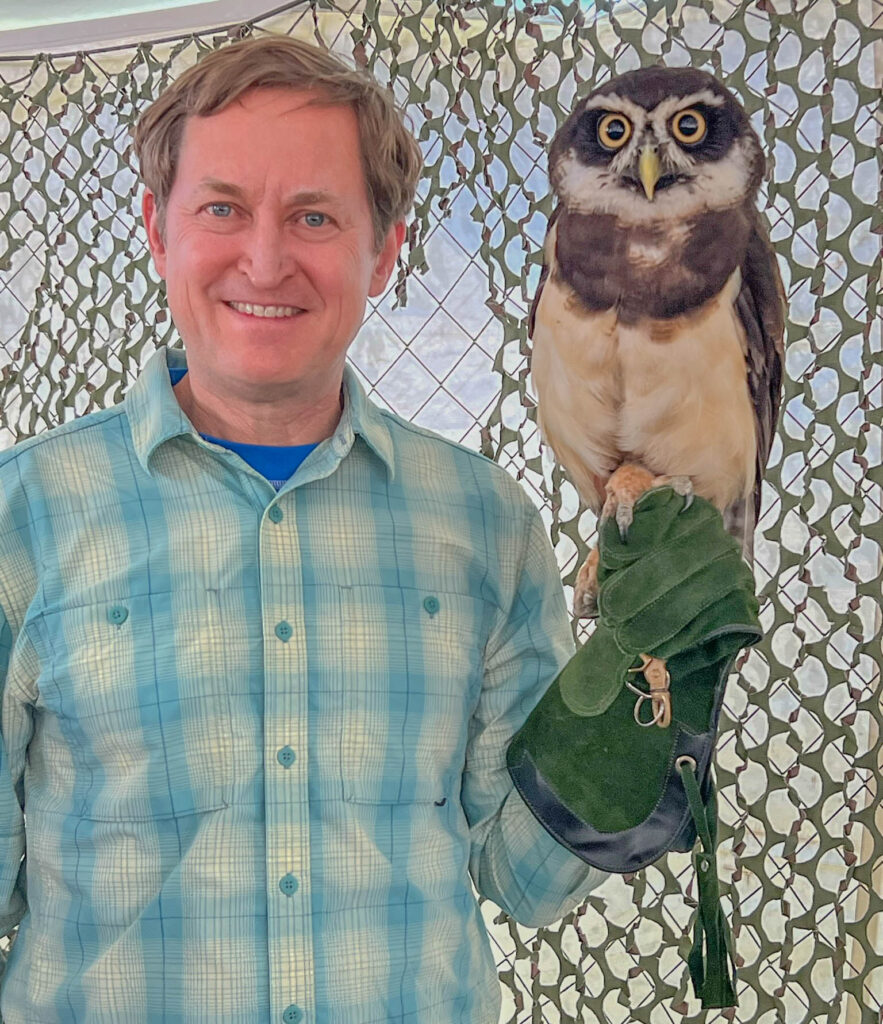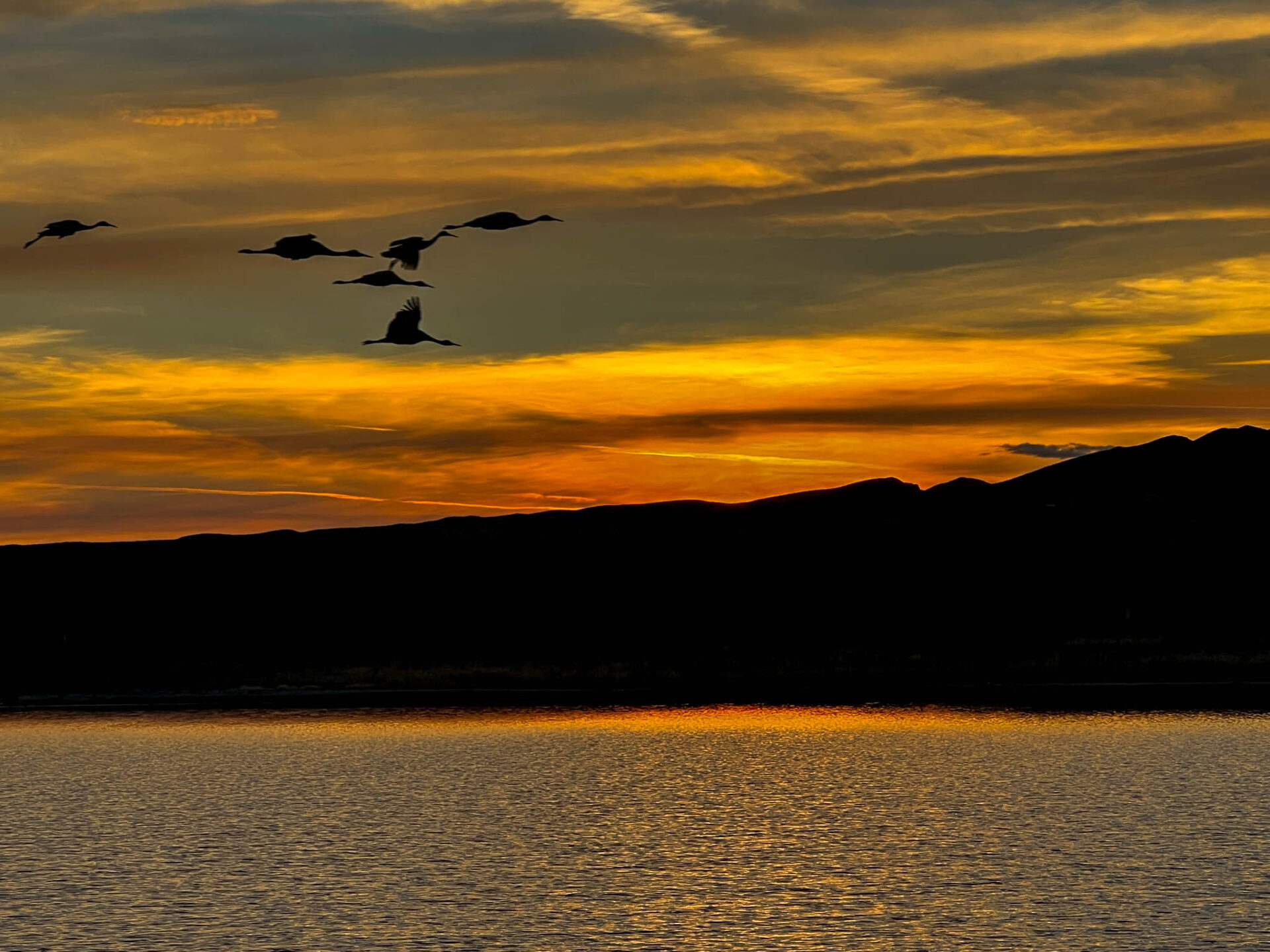The birding in New Mexico is pretty amazing, which shouldn’t be a surprise given that New Mexico ranks in the top 5 of States with the most bird species. For those who are counting, 560 species have been spotted in New Mexico according to eBird, putting us just ahead of Florida.
As a bird nerd and craniac, I make an effort to visit many of the birding hotspots in New Mexico. Here are some of my favorite New Mexico birding hot spots and resources to help you plan your next New Mexico birding adventure.
Table of Contents

Top 15 Hotspots for Birding in New Mexico
- Bosque del Apache National Wildlife Refuge (San Antonio, NM) – 382 species
- Bitter Lake National Wildlife Refuge (Roswell, NM) – 349 species
- Carlsbad Caverns National Park – Rattlesnake Springs (Carlsbad) – 328 species
- Percha Dam State Park (Arrey, NM) – 325 species
- Rio Grande Nature Center State Park (Albuquerque) – 324 species
- Las Vegas National Wildlife Refuge – 296 species
- Ute Lake State Park – Main Boat Ramp and Campground – 293 species
- Bosque Redondo Park (Fort Sumner) – 290 species
- Maxwell National Wildlife Refuge – 287 species
- Sumner Lake State Park – 283 species
- Melrose Migrant Trap (11 miles west of Melrose, New Mexico) – 277 species
- Caballo Lake State Park – Riverside Recreation Area (below dam) – 274 species
- Elephant Butte Lake State Park – Paseo del Rio – 271 species
- Mesilla Valley Bosque State Park – 271 species
- Valle de Oro National Wildlife Refuge (Albuquerque) – 265 species
Other notable birding sites
- Randall Davey Audubon Center and Sanctuary (Santa Fe) – 220 species
- Sandia Crest (top of Sandia Peak in Albuquerque) – 145 species, but is the place to go if you want to see the three species of Rosy Finches (black rosy-finch, gray-crowned rosy-finch, and brown-capped rosy-finch), and other hard to find species such as the American Three-Toed Woodpecker.
- Manzano Mountains HawkWatch: One of the best spots to watch hawks in the southwestern United States.
New Mexico Birding Resources
- Audubon Southwest: Audubon Southwest includes the following four local chapters in New Mexico:
- Central New Mexico Audubon Society: Based out of Albuquerque. Soon will be changing its name to Bird Alliance of Central New Mexico.
- Mesilla Valley Audubon Society: Serving Doña Ana, Otero, and Sierra counties.
- Sangre de Cristo Audubon Society: Serving Santa Fe and Northern New Mexico.
- Southwestern New Mexico Audubon Society: Serving Silver City, Deming, Lordsburg, Glenwood, Cliff, Reserve, the Mimbres Valley, and the Gila National Forest.
- Manzano Mountains Hawkwatch: HawkWatch International is committed to learning more about raptor migration. The Manzano Mountains site began standardized annual migration counts in 1985, making it HawkWatch International’s second oldest count site.
- Friends of Bosque del Apache National Wildlife Refuge: provides support to the Bosque del Apache NWR, including education and coordination of the annual Festival of Cranes.
- Friends of Rio Grande Nature Center: provides support to the Rio Grande Nature Center’s mission to preserve and protect the Rio Grande bosque, to educate the public about Rio Grande ecosystems, and to foster positive human interactions with those systems.
- Friends of Valle de Oro National Wildlife Refuge: provides support for educational activities and future expansion of the Valle de Oro National Wildlife Refuge. Future expansion of the Refuge will include more visitor trails and public amenities, educational and communication programming, and expansive restoration projects to transform the land back into a native high desert, wetland, grassland, and Bosque forest habitat landscapes.
Happy birding!
Mark (New Mexico Travel Guy)


